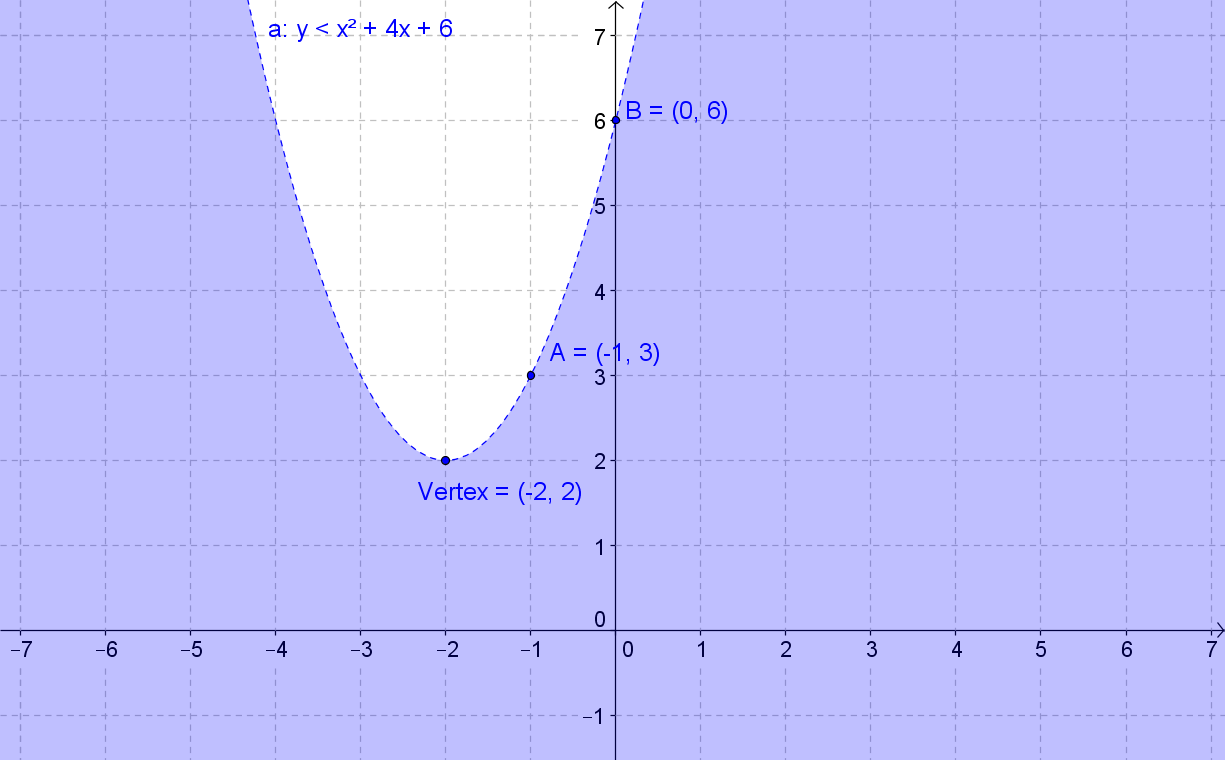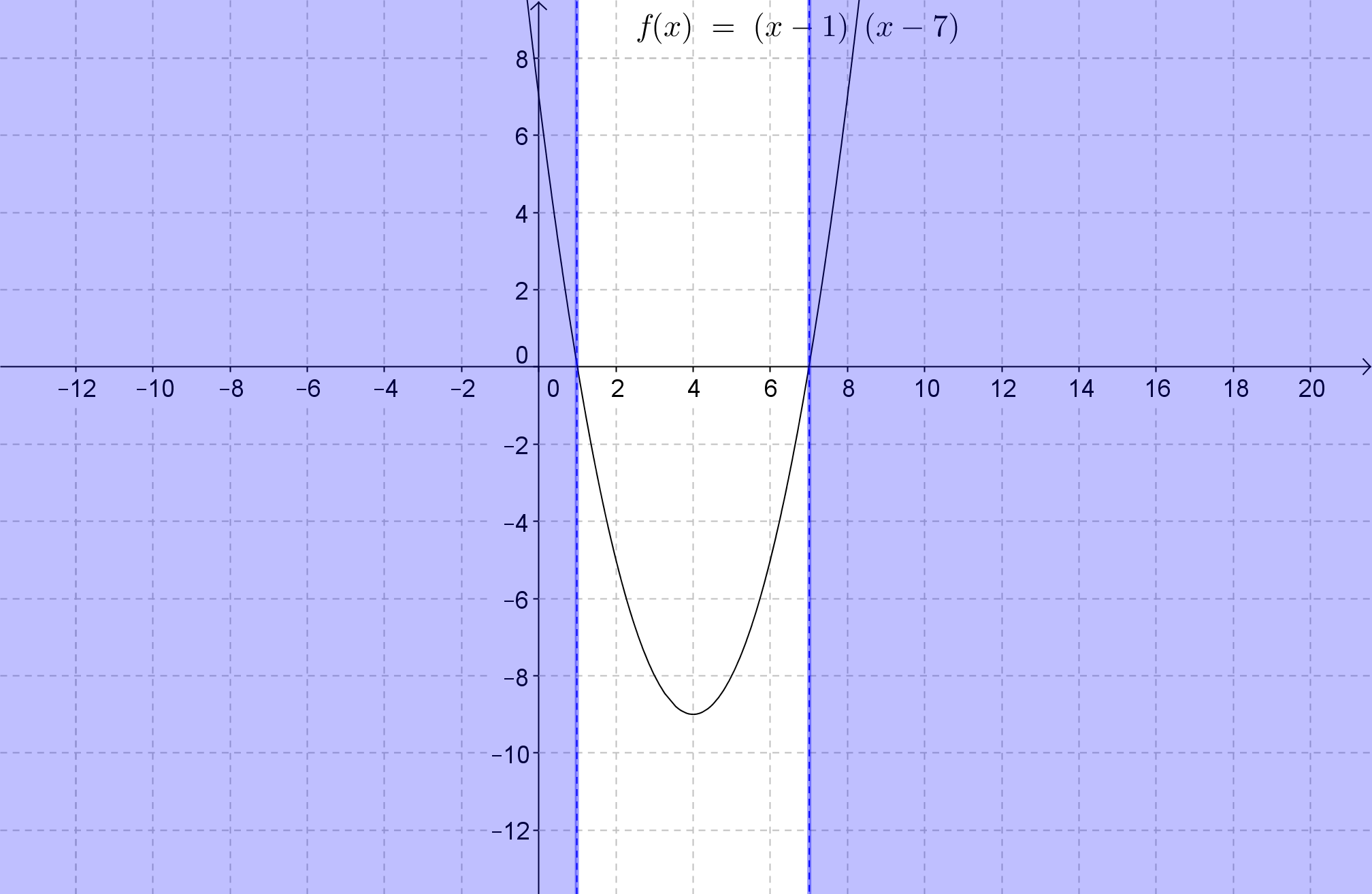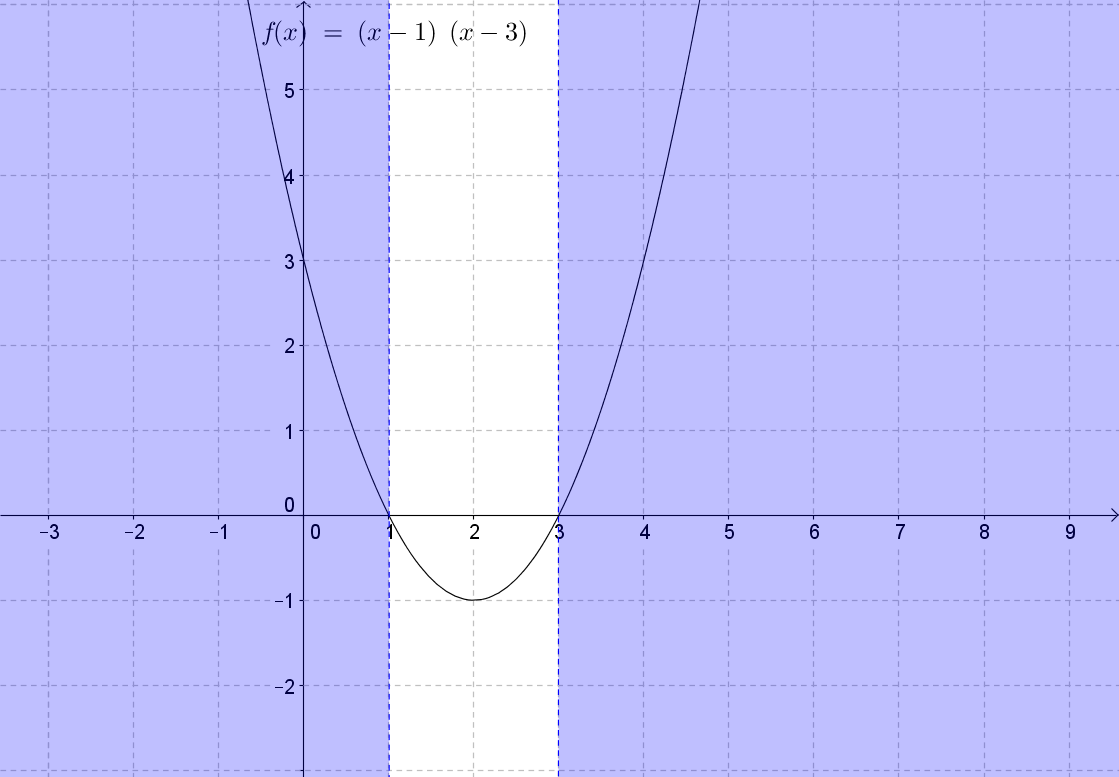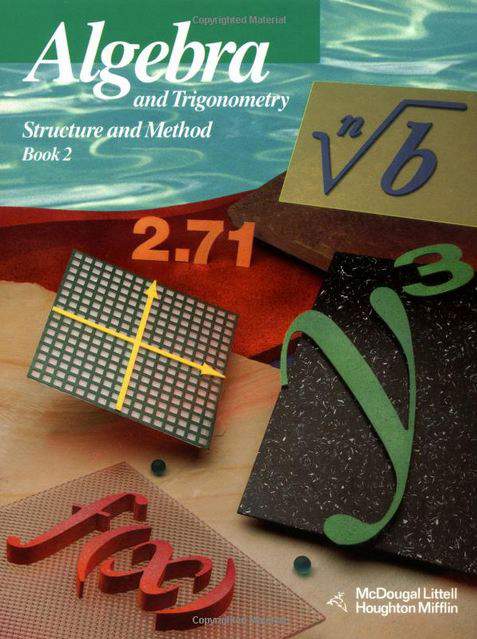Connecting...

This is a quick preview of the lesson. For full access, please Log In or Sign up.
For more information, please see full course syllabus of Algebra 2
For more information, please see full course syllabus of Algebra 2
Algebra 2 Graphing and Solving Quadratic Inequalities
Lecture Description
In solving and graphing quadratic inequalities, we are going to use some of the methods we used for solving linear inequalities. The first step is to graph the related equation and use a test point to determine the set of solutions. You can also use logic for this but you can verify your reasoning using a test point. To make the graphing easier, you can use the vertex, and the roots of the quadratic equation. Through the examples in this lecture, you'll practice how to graph and solve quadratic inequalities.
Bookmark & Share
Embed
Share this knowledge with your friends!
Copy & Paste this embed code into your website’s HTML
Please ensure that your website editor is in text mode when you paste the code.(In Wordpress, the mode button is on the top right corner.)
×
Since this lesson is not free, only the preview will appear on your website.
- - Allow users to view the embedded video in full-size.
Next Lecture
Previous Lecture









































 Carleen Eaton
Carleen Eaton Grant Fraser
Grant Fraser
 Answer Engine
Answer Engine













3 answers
Last reply by: Merin Jojy
Sat Jan 23, 2021 12:49 PM
Post by julius mogyorossy on June 18, 2015
I didn't explain it as simply as I should have, about seeing where the solution set is going to be. You don't need a test point, it tells you right where it is going to be, it is obvious, it could not be more obvious. Look at example one, it say it said that y<x'2+4, that means that the y values for points in the solution set are going to be less than the y values on the line that make up the parabola, or in this case, the boundary. They are going to be below the parabola, what they would call in this case, outside the parabola, since the parabola is facing up. Since the vertex is at (0, 4) ever other x point at x=0 which is below 4, below the parabola is part of the solution set. Same holds true for every other infinite x point on the parabola, every other infinite x point at x=2 that has a corresponding y value that is less than the y value on the boundary, or on the parabola line is going to be part of the solution set, ie, x=8, y=7, x=8, y=-6, x=8, y=-infinity, any point, in this case, that is below the parabola, what they would call outside, is part of the solution set, I see the parabola, if it opens up or down, as being a horizontal line. It does not matter if the parabola opens up or down, if it says y is less than, that means below the parabola, as I see it, or course if y is greater than x'2 whatever, then above. I don't understand Dr. Carleen's logic, it is above my head, maybe when I have a PHD in mathematics. I am going to have to stop my Educator.com for a while, because I am a loser, because I am being blacklisted, it breaks my heart. Dr. Carleen, I love you, please forgive me, as the phony buddha would say, you really turned me on, to mathematics, when I am the most famous person on the planet, when I am a God, a trillionaire, call me if you need a favor, I shall make sure you have my number, I am your Godfather now, funny, they always compare me to mafia figures, which cracks me up since I am such a goofball, except in war, combat. Forgive my ADD, not time to proof. PS, same logic holds true for parabolas that open the the left or write, as they would say it, if x is less than y'2 whatever, the solution set is to the left of the parab, can you dig it.
1 answer
Sat Nov 1, 2014 4:11 PM
Post by Smriti Sharan on October 19, 2014
Q. Graph the inequality y < x2 − 6x + 12
*These practice questions are only helpful when you work on them offline on a piece of paper and then use the solution steps function to check your answer.
Step 1. Find the vertex x = − [b/2a]
Step 2. x = − [b/2a] = − [(( − 6))/2] = 3
Step 3. f(3) = (3)2 − 6(3) + 12 = 3
In this practice question, shouldn't x equal to -3?
1 answer
Thu Mar 27, 2014 6:54 PM
Post by Christopher Lee on January 22, 2014
At 11:13, you said that when x<=-3, y is positive, but 0 isn't considered positive, so it should be when x<-3, not equal to.
1 answer
Last reply by:
Sat Dec 14, 2013 7:58 AM
Post by julius mogyorossy on September 24, 2013
Funny to me, I used the midpoint formula for the x dimension, from the Geometry I have learned so far, to find the axis for two roots, to find the vertex, I am starting to put it all together. I have incredible instincts, I think I am going to discover something incredible in Geometry. I have already figured out a way to do my spinning kicks in the air in my apartment much less dangerously because of geometry. Once I ended up hanging from my heavy bag upside down hanging via one foot and my jump rope on my heavybag, that one commercial is making fun of me.
1 answer
Last reply by: John Stedge
Mon Jun 4, 2018 4:12 PM
Post by julius mogyorossy on June 10, 2013
Dr. Eaton, it seems you said that x'2+x-6 is y, but it seems to me that the 0 is y. This seems to be shown to be the case because you end of with x>2, and one of the roots is (2,0) where x=2 and y=0. I am also confused by why you say the solution set is x<-3 and x>2, when the quadratic equation clearly says it is x>-3, x>2. From the way mathematicians look at it it seems the negative solution is a lie, and the positive one the truth. The way I find the solution set is to look at the quadratic inequality when it is in the form where the 0, the y, is all alone on the right, then it is obvious where it is, it is telling you that 0, y values for the solution set, are less than x'2+x-6, which is the graph line that you will draw, since, a, is positive and it will face up, and y values for the solution set are less than the graph line they must be below that graph line, on the outside, since it faces up, it it faced downwards, on the inside. This method I call the Julius supergenius way of finding the solution set, maybe this what you were saying when you talked about the logical way to find the solution set, if so I could not understand so.
1 answer
Thu Jun 6, 2013 11:05 PM
Post by Kavita Agrawal on June 6, 2013
The last example was greater than, so the boundary should have been dotted, not solid.
1 answer
Last reply by: John Stedge
Mon Jun 4, 2018 4:19 PM
Post by julius mogyorossy on March 25, 2013
As soon as you see -x'2 + x + 2 >y, -x'2 + x + 2 < y, x'2 + x + 2 > y, or, x'2 + x + 2 < y, you should know instantly where the solutions are at, the equations tell you even without finding the roots, sometimes the roots are not the roots, have you noticed.
1 answer
Tue Feb 19, 2013 7:44 PM
Post by Kenneth Montfort on February 13, 2013
How do you know when to combine the solutions and when not to combine the solutions? I keep hearing "this 'and' that" or "this 'or' that".
1 answer
Mon Jul 16, 2012 7:53 PM
Post by George Welborn on July 14, 2012
At around 11:08 you said "at points when x is less than or equal to negative three or greater than or equal to negative two" but it should be just two, not negative two.